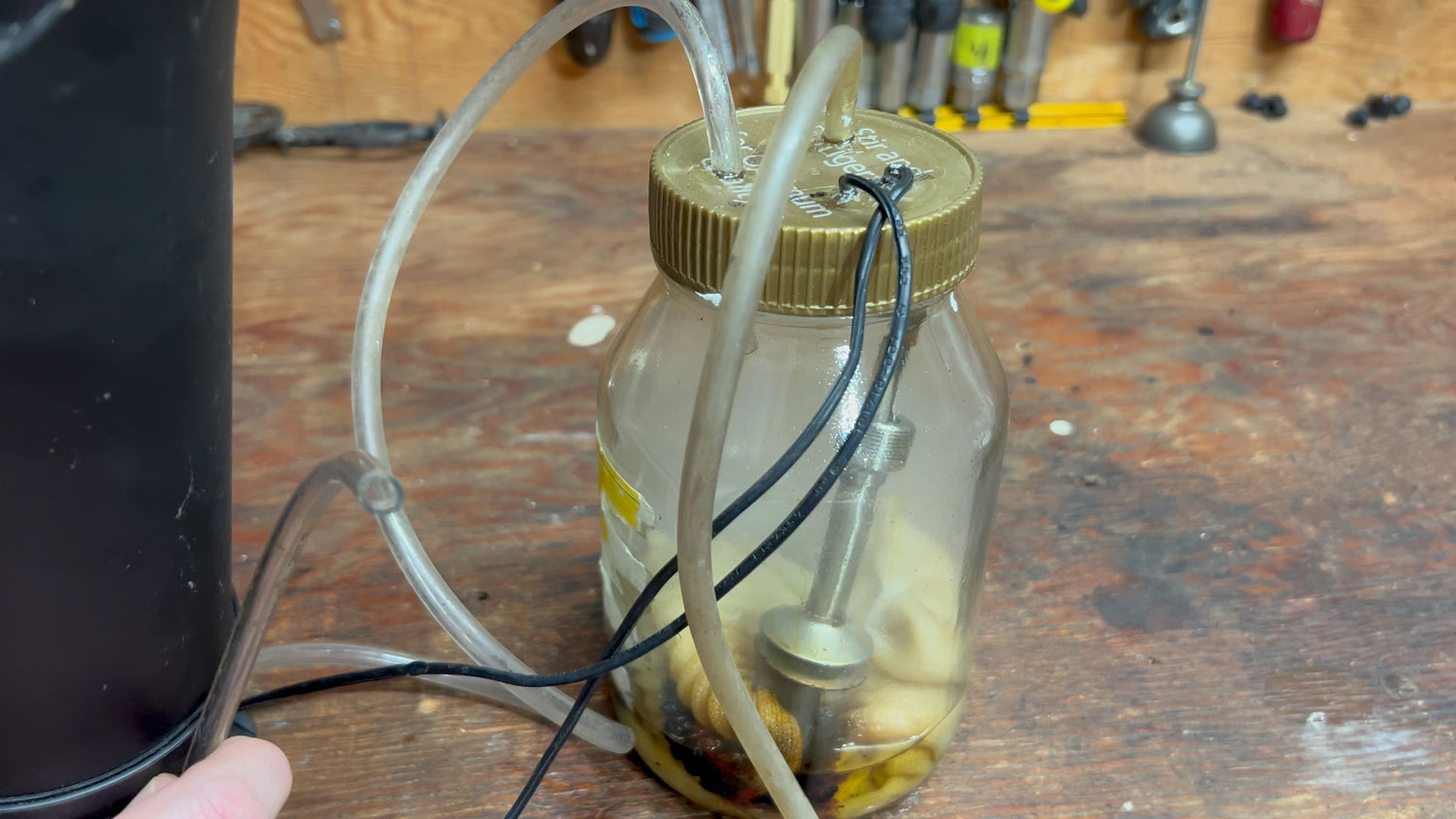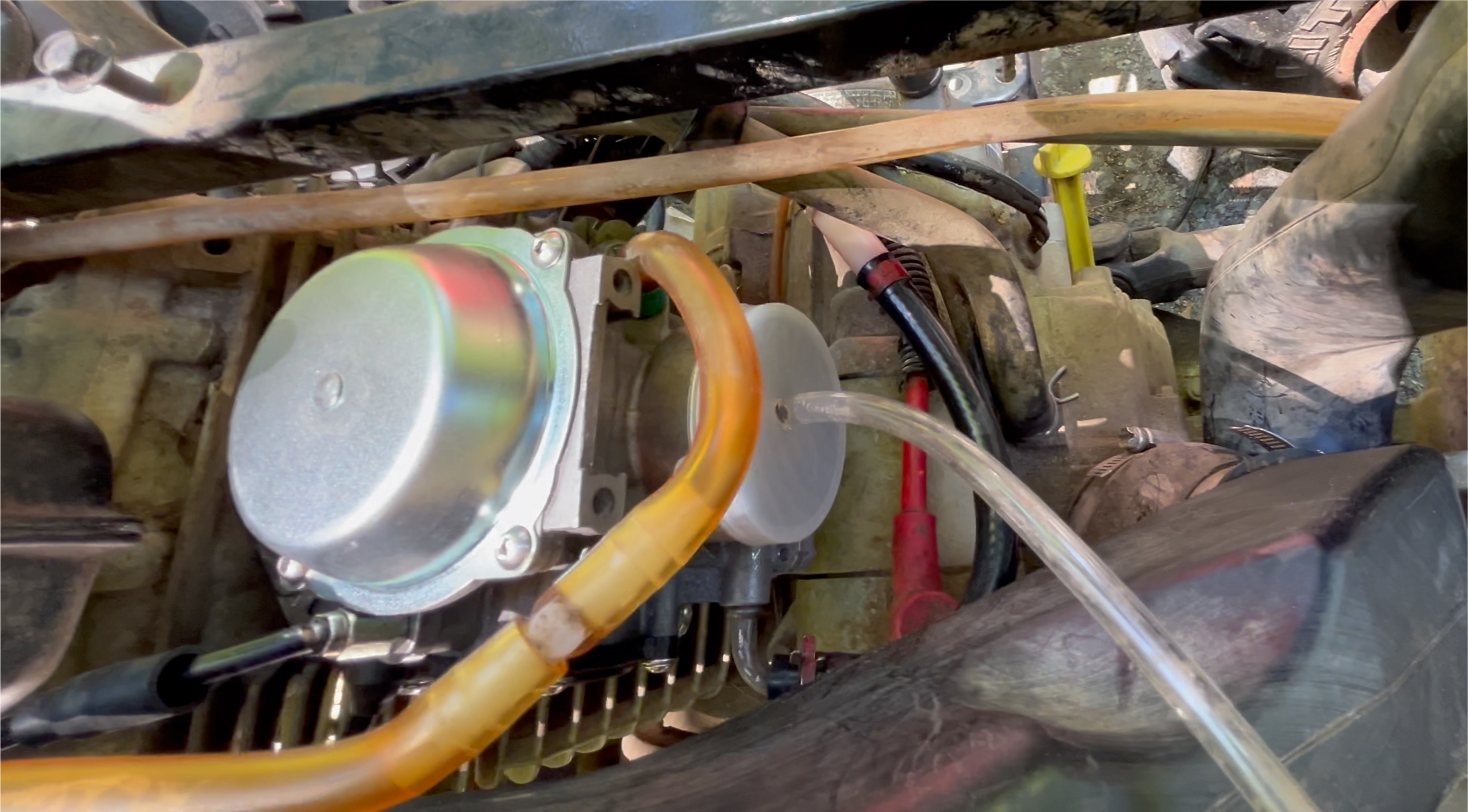Supplies
- Glass jar (e.g. old mayonnaise jar)
- Wood burner
- Mineral oil
- Non-synthetic piece of fabric (e.g. cotton sock)
- Clear tubing inlet and outlet
- Silicone or some other sealant
- Inflator hand pump
- (Optional) A laser pointer can be helpful when trying to locate the smoke
Instructions

Step 1)
Drill holes in top of jar for inlet/outlet tubes and wood burner power cord. Make holes as small as possible; seal with super glue or silicone to prevent smoke from escaping.
Step 2)
Fill jar 1/4 full of mineral oil and place cotton sock in the bottom of the jar.
Step 3)
Place wood burner in jar so it is in contact with the sock. The sock acts as a wick for the mineral oil and because it’s soaked, it does not ignite, only creates smoke.
Step 4)
Wait a few minutes for smoke to build up, then use inflator hand pump to blow air into the jar via the inlet hose. Smoke will exit the outlet hose which hooks up to whatever you’re smoke testing.
Alternative - Propane or Starter Fluid
An unlit propane torch can also help identify leaks - if the propane causes the engine’s RPM’s to increase, it means the propane is being sucked in via a vacuum leak.
This test can also be completed by spraying some starter fluid where you suspect the problem is.
Both these tests can be useful to narrow down the source of the leak, but they’re not as precise as the smoke test, especially when working with small engine components.

Photos


